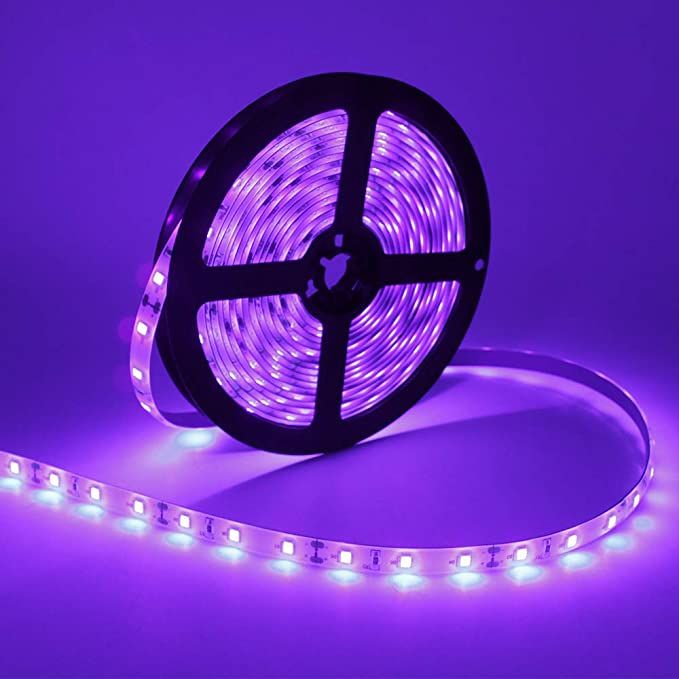LED strip lights are one of the most popular and versatile home lighting solutions available today. They’re affordable, easy to install, and can dramatically change the mood and aesthetic of any room. If you’ve been thinking about adding a vibrant glow to your space but feel daunted by the idea of installation, fear not! This beginner’s guide will walk you through the ledsuntech addressable white led strip process, step by step, ensuring a stress-free setup.
Why Choose LED Strip Lights?
- Versatility: They can be used for accent lighting, under-cabinet lighting, backlighting TVs, creating unique patterns, and much more.
- Energy Efficiency: LEDs consume significantly less power than traditional bulbs, saving you money on your electricity bill.
- Long Lifespan: They last for thousands of hours, meaning less frequent replacements.
- Color Options: Many strips offer RGB (Red, Green, Blue) capabilities, allowing you to choose from millions of colors and various lighting effects.
- Easy Installation: Most come with adhesive backing, making them a DIY-friendly project.
Tools and Materials You’ll Need:
Before you begin, gather everything you’ll need:
- LED Strip Lights: Purchase the correct length, voltage (12V or 24V), and type (single color, RGB, RGBW, etc.).
- Power Supply (LED Driver/Transformer): This converts your home’s mains voltage to the low voltage required by the LEDs. Ensure its wattage capacity is at least 20% higher than the total wattage of your LED strips.
- Controller (Optional but Recommended): If you have RGB or smart strips, this allows you to change colors, dim the lights, and set modes.
- Scissors: For cutting the LED strip.
- Measuring Tape: To accurately measure your installation area.
- Cleaning Supplies: Rubbing alcohol and a clean, lint-free cloth.
- LED Strip Connectors (Optional): For joining multiple strips or navigating corners without soldering.
- Mounting Clips/Brackets (Optional): For extra security, especially on rough surfaces or for long runs.
- Wire Strippers (Optional, if soldering or making custom connections).
Step-by-Step Installation Guide:
Follow these steps for a smooth and successful LED strip light installation:
Step 1: Plan Your Layout and Measure
- Vision: Before anything else, decide exactly where you want your LED strips to go. Will they be under cabinets, behind a TV, along a ceiling cove, or outlining a piece of furniture?
- Measure: Use your tape measure to determine the precise length of LED strip you’ll need. It’s always better to buy a bit extra, as you can easily cut them down.
- Power Source: Identify the nearest power outlet for your power supply. Plan how you’ll route the wires discreetly.
- Corners/Obstacles: If you have corners or obstacles, consider whether you’ll need corner connectors or if the strip’s flexibility is sufficient.
Step 2: Clean the Installation Surface
- This is a crucial step that many beginners skip! A clean, dry surface ensures the adhesive backing on your LED strip sticks properly and permanently.
- Use rubbing alcohol and a clean cloth to thoroughly wipe down the entire area where the strip will be mounted.
- Allow the surface to dry completely before proceeding.
Step 3: Cut the LED Strip to Length (If Necessary)
- Most LED strips have designated cutting points marked by small copper pads or a scissor icon, typically every 2-3 inches (5-10 cm).
- Using sharp scissors, make a clean cut ONLY at these marked points. Cutting elsewhere can damage the circuit and make that section of the strip unusable.
Step 4: Connect the LED Strip to the Power Supply/Controller
- Direct Connection: Most LED strip kits come with a pre-attached connector that plugs directly into your power supply or controller. Ensure the polarity (positive to positive, negative to negative) is correct.
- Using Connectors (for cut strips or corners): If you’ve cut your strip or need to go around a sharp corner, you’ll use solderless connectors. These typically have small clips that “bite” onto the copper pads of your LED strip. Ensure all pins are aligned correctly.
- Soldering (Advanced, Optional): For a more permanent and robust connection, you can solder wires directly to the copper pads. This requires a soldering iron and some skill, so it’s not recommended for absolute beginners.
Step 5: Test the Lights
- Before peeling off the adhesive and committing to the installation, connect everything – the LED strip, controller (if applicable), and power supply – and plug it into the wall.
- Turn on the lights and test all functions (color changes, dimming, modes). This allows you to troubleshoot any connection issues before sticking the strip permanently.
Step 6: Install the LED Strip Lights
- Once tested, start peeling off the adhesive backing from the LED strip. It’s best to peel only 6-18 inches (15-45 cm) at a time to prevent the adhesive from collecting dust or sticking to itself.
- Starting near your power source, carefully align the strip with your planned path.
- Press the strip firmly onto the clean surface, smoothing it down as you go to remove any air bubbles. Continue peeling and pressing until the entire strip is installed.
- For added security, especially on textured surfaces or for long, heavy strips, consider using the included (or separately purchased) mounting clips or brackets. Screw these into place over the strip at regular intervals.
Step 7: Secure the Power Supply and Controller
- Find a discreet and well-ventilated spot for your power supply and controller.
- You can use double-sided tape, Velcro strips, or screws (if compatible with the power supply/controller) to secure them in place. Ensure they are easily accessible if you need to troubleshoot or adjust settings.
- Tidy up any excess wires using cable ties or clips for a clean, professional look.
Step 8: Enjoy Your New Lighting!
- Plug everything in (if you haven’t already), grab your remote or open your app, and enjoy the transformative power of your newly installed LED strip lights!
Troubleshooting Common Issues:
- Lights not turning on: Double-check all connections, ensuring polarity is correct. Make sure the power supply is plugged in and working.
- Sections not lighting up: This usually means a bad cut or a faulty connection at one of the cutting points. Re-cut or re-connect the problematic section.
- Lights flickering: Could be an overloaded power supply (ensure it has enough wattage), loose connections, or voltage drop on very long runs.
- Adhesive not sticking: The surface wasn’t clean or dry enough, or the adhesive is old. Use extra mounting clips or stronger double-sided tape.
Installing LED strip lights is a rewarding DIY project that can significantly enhance your home’s ambiance. By following these steps, even beginners can achieve a professional and stunning lighting setup.




